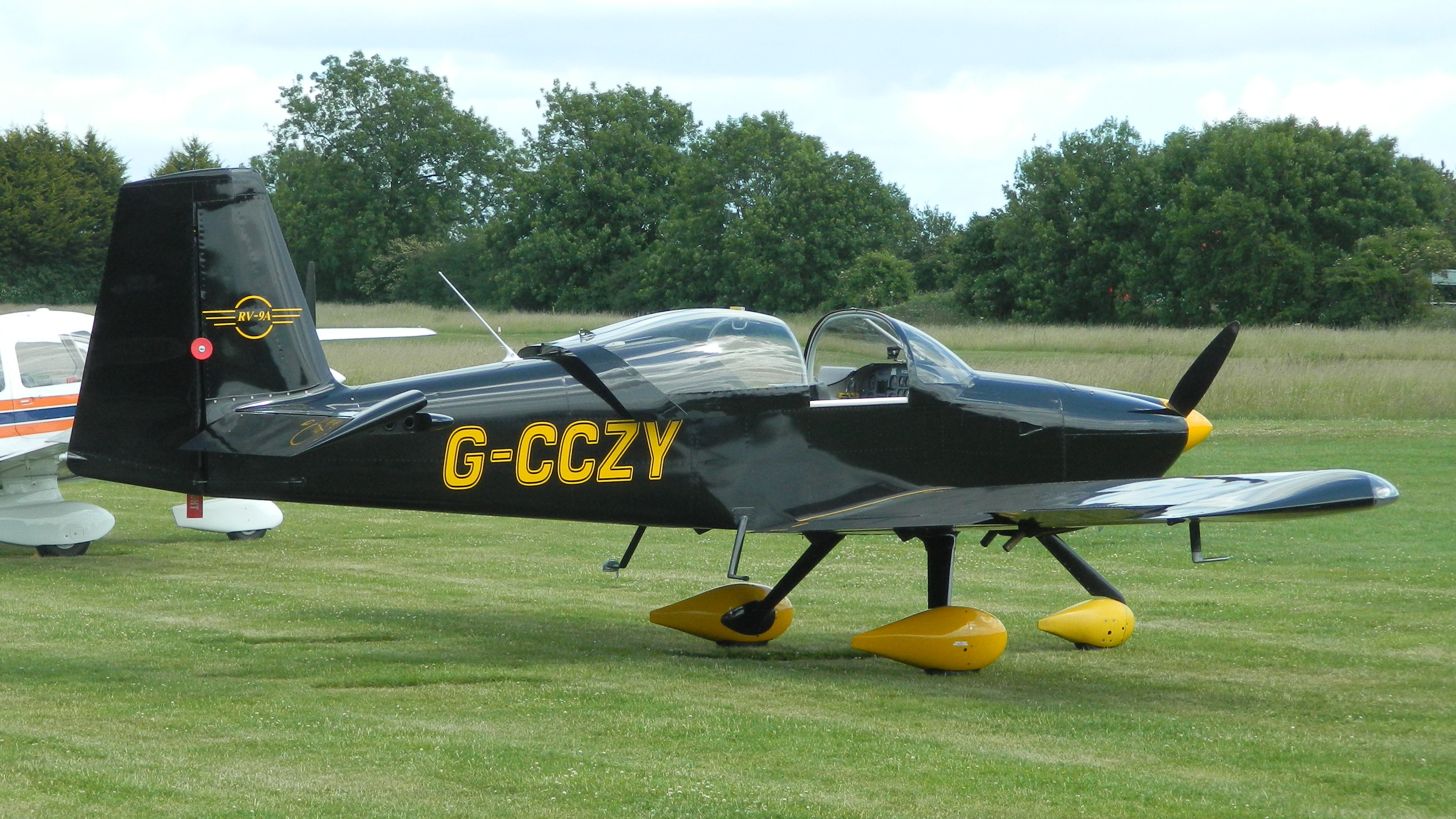Van's Aircraft RV-9 on:
[Wikipedia]
[Google]
[Amazon]
The Van's RV-9 and RV-9A are American two-seat, single-engine, low-wing homebuilt airplanes sold in kit form by Van's Aircraft of
 The architect of the line of Van's aircraft,
The architect of the line of Van's aircraft,

Van's Aircraft
{{VansAircraft Homebuilt aircraft 2000s United States civil utility aircraft RV-09 Low-wing aircraft Single-engined tractor aircraft Aircraft first flown in 1997
Aurora, Oregon
Aurora is a city in Marion County, Oregon, United States. Before being incorporated as a city, it was the location of the Aurora Colony, a religious commune founded in 1856 by William Keil and John E. Schmit. William named the settlement after h ...
. The RV-9 is the tail-wheel equipped version while the RV-9A features a nose-wheel.Downey, Julia: ''2008 Kit Aircraft Directory'', Kitplanes, Volume 24, Number 12, December 2007, page 78. Primedia Publications. Vandermeullen, Richard: ''2011 Kit Aircraft Buyer's Guide'', Kitplanes, Volume 28, Number 12, December 2011, page 74. Belvoir Publications. Bayerl, Robby; Martin Berkemeier; et al: ''World Directory of Leisure Aviation 2011–12'', page 125. WDLA UK, Lancaster UK, 2011.
The RV-9 was built around a newly designed high aspect ratio wing, featuring a Roncz airfoil. It is similar in size and weight to the RV-6 and is externally similar to the RV-6 and the RV-7.
Development
 The architect of the line of Van's aircraft,
The architect of the line of Van's aircraft, Richard VanGrunsven
Richard E. "Dick" VanGrunsven (born 1939) is an American aircraft designer and kit plane manufacturer. The number of VanGrunsven-designed homebuilt aircraft produced each year in North America exceeds the combined production of all commercial ge ...
, designed the RV-9 as a departure from the concepts of the earlier RV series. The earlier members of the RV series, starting with the single seat RV-3, were all designed to have light handling, aerobatic capabilities along with high cruise speeds and short takeoff and landing
A short takeoff and landing (STOL) aircraft is a conventional fixed-wing aircraft that has short runway requirements for takeoff and landing. Many STOL-designed aircraft also feature various arrangements for use on airstrips with harsh condition ...
(STOL) capabilities. The RV-9 was designed from the start as a two-place, side-by-side, touring aircraft and as such it forgoes the aerobatic capabilities and the lighter handling for more stability and economy. As such the design horsepower is 118–160 and the prototype was flown with a Lycoming O-235
The Lycoming O-235 is a family of four-cylinder, air-cooled, horizontally opposed piston aircraft engines that produce , derived from the earlier O-233 engine.Textron Lycoming: ''Operator's Manual, Textron Lycoming Aircraft Engines, Series O-23 ...
powerplant of as a proof-of-concept for the lower horsepower.
As a result of the lessons learned over the years in producing the first five RV-series designs and the change in role for this aircraft, the RV-9 design incorporated many changes over previous designs.
The RV-9A was the first to use what Van's calls "matched-hole" components in that airframe parts are formed to the required contour and have all the rivet holes precisely located. The assembly jigs normally used to ensure alignment are not necessary and build time is much reduced. Later models, such as the RV-7 and RV-10, use this same manufacturing technique.
Compared to the similar RV-7, the RV-9 has a wing of increased span and higher aspect ratio using a Roncz airfoil. The RV-9 has a low stall speed, comparable to the Cessna 150
The Cessna 150 is a two-seat tricycle gear general aviation airplane that was designed for flight training, touring and personal use.Plane and Pilot: ''1978 Aircraft Directory'', pages 22-23. Werner & Werner Corp, Santa Monica CA, 1977. In 19 ...
, and docile handling suitable for low-time pilots. The cruise speed is a very respectable TAS even with the engine.
The RV-9 was offered after the RV-8, but before the RV-7 and shares many common parts with both aircraft, which reduces production costs. Like those aircraft, the RV-9 uses computer assisted design to produce a kit with pre-drilled rivet holes, thus greatly reducing assembly time for the builder.
The RV-9 is unique in Van's aircraft history in that the tricycle gear RV-9A version was flown first on June 15, 2000, three years before the tail wheel version flew. The later conventional landing gear
Conventional landing gear, or tailwheel-type landing gear, is an aircraft undercarriage consisting of two main wheels forward of the center of gravity and a small wheel or skid to support the tail.Crane, Dale: ''Dictionary of Aeronautical Term ...
equipped RV-9 was first flown by its designer in 2002. The RV-9A features solid circular spring steel landing gear with the nosewheel mounting tube welded to the engine mount. As in all nose-wheel equipped RV aircraft, the nosewheel is free castering and the aircraft is steered with differential braking. The brakes are mounted conventionally on the rudder pedal toes.
As of November 2022, 1173 RV-9s and RV-9As have been completed and flown.
Specifications (RV-9A with Lycoming O-320)

See also
References
External links
Van's Aircraft
{{VansAircraft Homebuilt aircraft 2000s United States civil utility aircraft RV-09 Low-wing aircraft Single-engined tractor aircraft Aircraft first flown in 1997